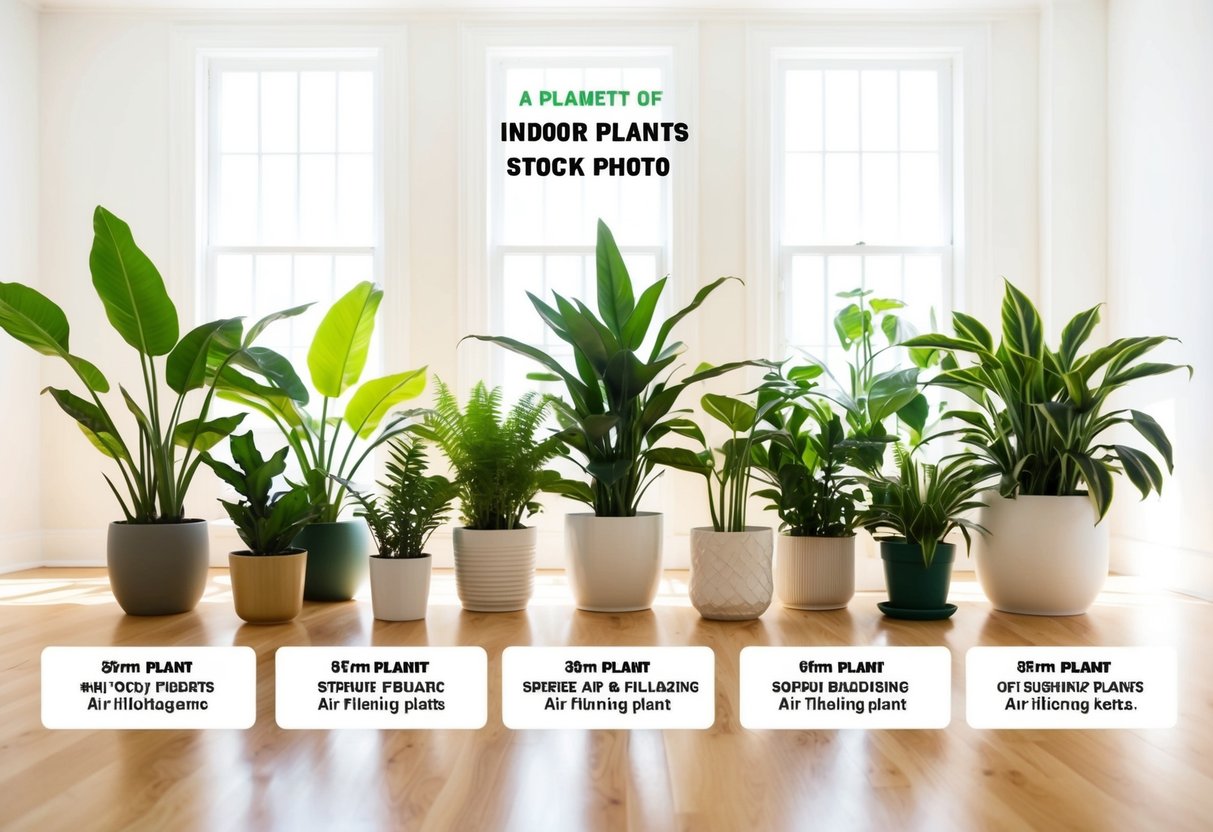Indoor Plants that Double as Air Purifiers for a Healthier Home
Plant Care for Maximum Air Purification
Proper care is vital to ensure plants maintain their air-purifying capabilities. Regularly wiping dust off leaves and ensuring plants are not waterlogged promotes their health. It’s important to note that overwatering can damage roots, impacting the plant’s ability to purify air. Providing the right balance of light, water, and nutrients can maximize their efficiency.
Rotation of plants, ensuring each one receives optimal sunlight, should be part of regular maintenance. Mineral-rich soil can enhance plant growth, ensuring vibrant foliage and effective air purification. Repotting plants when they outgrow their containers supports healthy root development, furthering their air-cleansing efficiency.
Plants and Their Specific Air Filtering Capabilities

Some indoor plants have unique abilities to filter specific air pollutants, thereby contributing to a healthier home environment. The following sections explore the capabilities of Ficus, Philodendron, and Chrysanthemum in removing benzene, formaldehyde, and ammonia, respectively.
Ficus and Benzene Removal
Ficus trees, often known as weeping fig, are popular houseplants recognized for their aesthetic appeal and air-purifying qualities. They are particularly effective at removing benzene, a harmful volatile organic compound commonly found in household products like paints, glues, and detergents. The Ficus absorbs benzene through its leaves and roots, helping to reduce indoor air pollution.
It is advisable to place Ficus trees in areas with moderate sunlight to optimize their air-cleaning potential. While they require regular watering, allowing the topsoil to dry between watering sessions can prevent overwatering. By strategically placing these plants within living spaces, residents can effectively tackle benzene contamination, thereby promoting a cleaner and safer indoor environment.
Philodendron and Formaldehyde Absorption
Philodendron species are well-regarded for their ability to absorb formaldehyde, a common indoor pollutant. This chemical is often emitted from building materials and household products, such as pressed-wood furniture and cleaning agents. Philodendrons take up formaldehyde through their leaves, contributing to reduced exposure levels in homes.
These plants thrive in low to medium light conditions and require minimal maintenance, making them a practical choice for busy homeowners. Regularly wiping the leaves with a damp cloth can enhance their air-filtering performance by removing dust buildup. By incorporating Philodendrons into the home, individuals can effectively decrease formaldehyde levels, supporting a healthier living environment.
Chrysanthemum and Ammonia Neutralization
Chrysanthemums, known for their vibrant blooms, offer more than just visual appeal; they are efficient at neutralizing ammonia in the air. Ammonia is frequently found in cleaning products and pet waste, potentially irritating the human respiratory system. Chrysanthemums absorb ammonia through their leaves, reducing its presence in the home.
To harness their full air-purifying potential, it is crucial to place these plants in well-lit areas with direct sunlight. They require regular watering, especially during their blooming season. Chrysanthemums act as natural air purifiers, significantly diminishing ammonia levels and contributing to healthier indoor air quality.
Care and Maintenance of Air-Purifying Plants
Proper care and maintenance of air-purifying indoor plants involve consistent watering and feeding routines, regular pruning and repotting, and effective management of pests and diseases.
Watering and Feeding
Ensuring that air-purifying houseplants receive the right amount of water and nutrients is crucial. Overwatering is a common problem, leading to root rot. Plants like peace lilies thrive when their soil is kept moderately moist, while snake plants prefer to dry out between waterings. Seasonal adjustments may be necessary, with increased watering during active growth seasons like spring and summer.
Feeding involves using a balanced liquid fertilizer every month during the growing season. Reduce fertilization in the fall and winter when plant growth typically slows. Observe each plant’s specific needs; some, like philodendrons, may benefit from diluted feedings to prevent nutrient burn. Consistency in watering and feeding will promote vibrant growth and efficient air purification.



